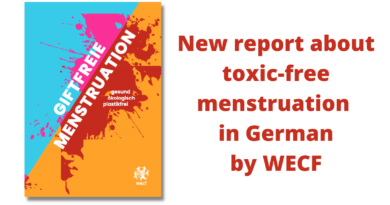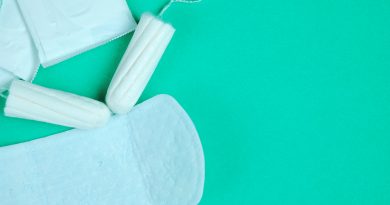Adapted from: Sustainable Menstruation – The Impact of Menstrual Products on the Environment by Ayesha Mehrotra
The Environmental Effects of Disposable Menstrual Products
For many, deciding which type of period product to use during menstruation seems second nature. It becomes easy to reach for a tampon or disposable sanitary napkin after the decision has been ingrained for so long that it becomes nearly subconscious. Few stop to think about the environmental havoc wreaked by these products, or their associated health risks. But the impact of disposable sanitary products is tangible and immense. Over the course of their reproductive years, people using tampons or pads will dispose of nearly 10,000 of these items. This waste results in a myriad of environmental consequences, including the degradation of soil fertility, groundwater pollution, and the leaching of toxic chemicals into the soil. These effects are compounded over centuries, as disposable sanitary napkins require between 500-800 years to decompose.
In addition to the inherent environmental impact of this waste, the methods used for its management are inadequate. Ambiguity exists as to whether sanitary products constitute bio-medical or dry waste, which leads to improper disposal. In order to deal with this grey zone, incineration has been proposed as a solution to the problem of hygiene waste, but questions remain regarding the cost-efficiency and safety of this practice. In order to circumvent the production of this waste, sustainable menstruation has been touted as an alternative to disposable products to significantly reduce environmental impact.
Menstruation can be managed with limited health and environmental impacts. Sustainable alternatives to disposable products include cloth pads, menstrual cups, and period-proof underwear. These interventions are both safe and cost-effective. They provide a feasible alternative to unsanitary or unreliable methods (such as using cloth from old towels or saris) used by many women who do not have access to disposable products. Each type of sustainable menstrual product presents unique benefits. Menstrual cups are cost-effective, long-lasting, flexible, and permit hassle-free sexual intercourse by inhibiting blood from flowing through the vaginal canal. Cloth pads are good for sensitive skin, re-usable, cost-effective over long-term use, and often support local businesses and the livelihoods of women. Period panties are relatively inexpensive and readily accessible, and multiple layers provide multiple barriers to leakage and maximize comfort. Sustainable menstrual products are a clear winner over their disposable counterparts in terms of cost, functionality, and health impacts to both humans and the environment. Reducing the reliance on disposable menstrual products will produce immeasurable gains and is a necessary step in the global transition toward sustainability.
Full publication is available at: https://medium.com/one-future/sustainable-menstruation-the-environmental-impact-of-menstrual-products-eba30e095cda



